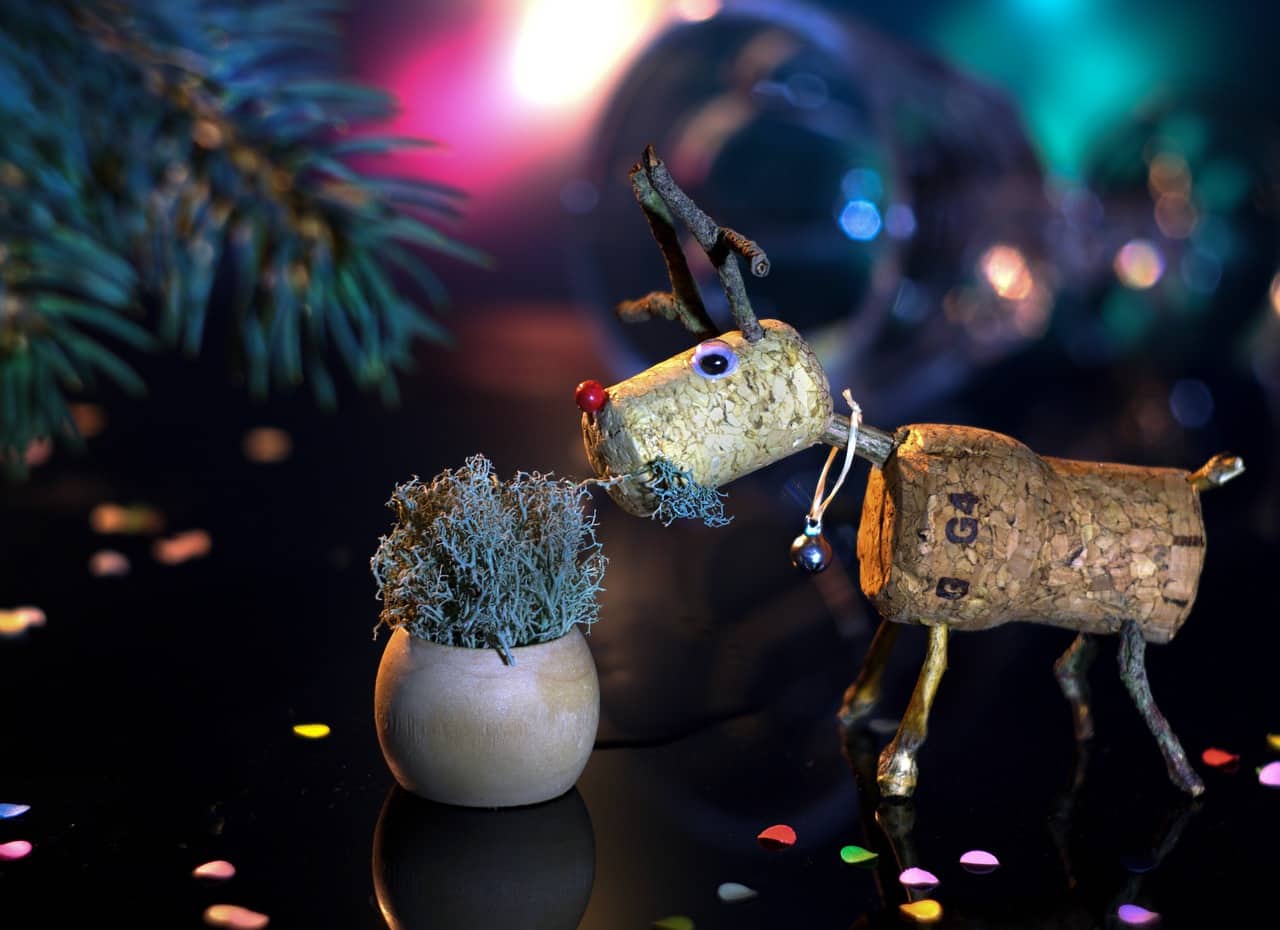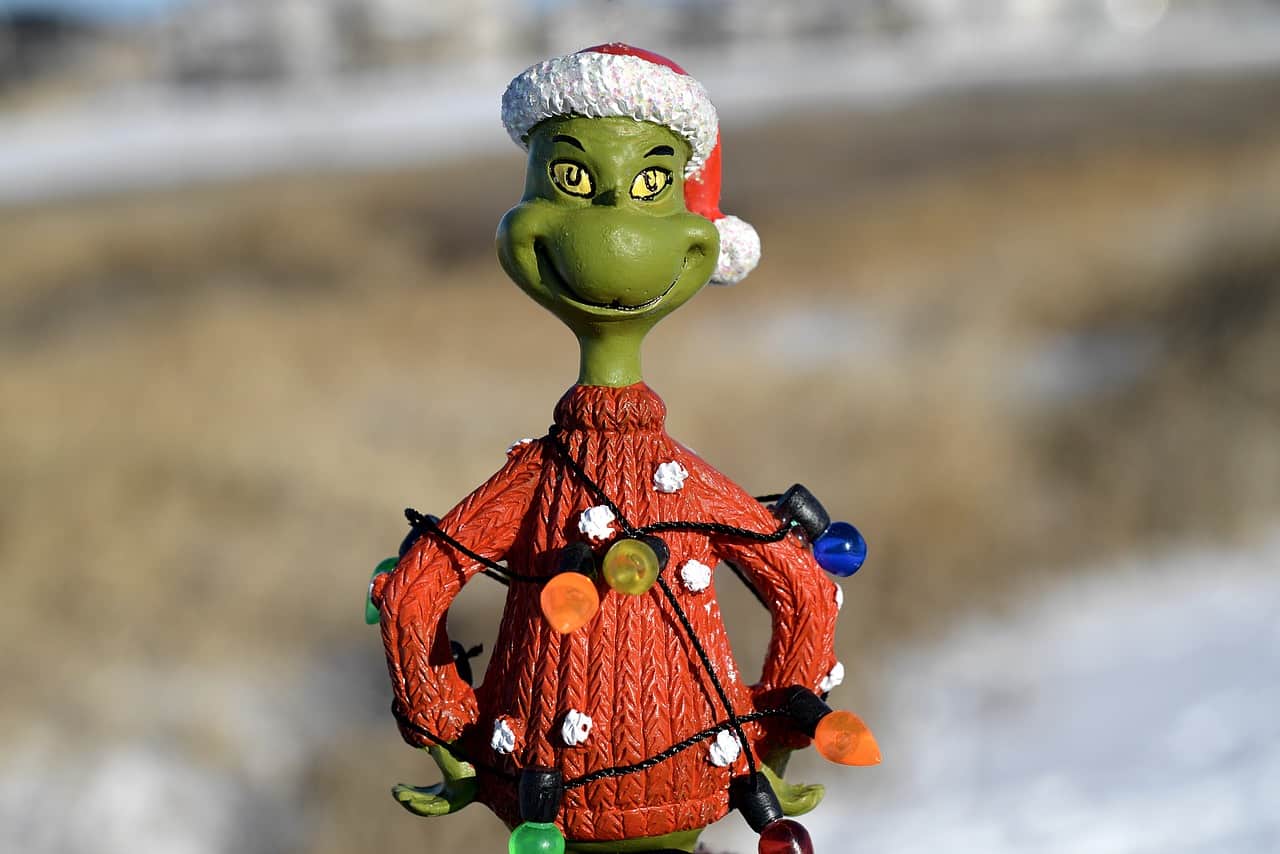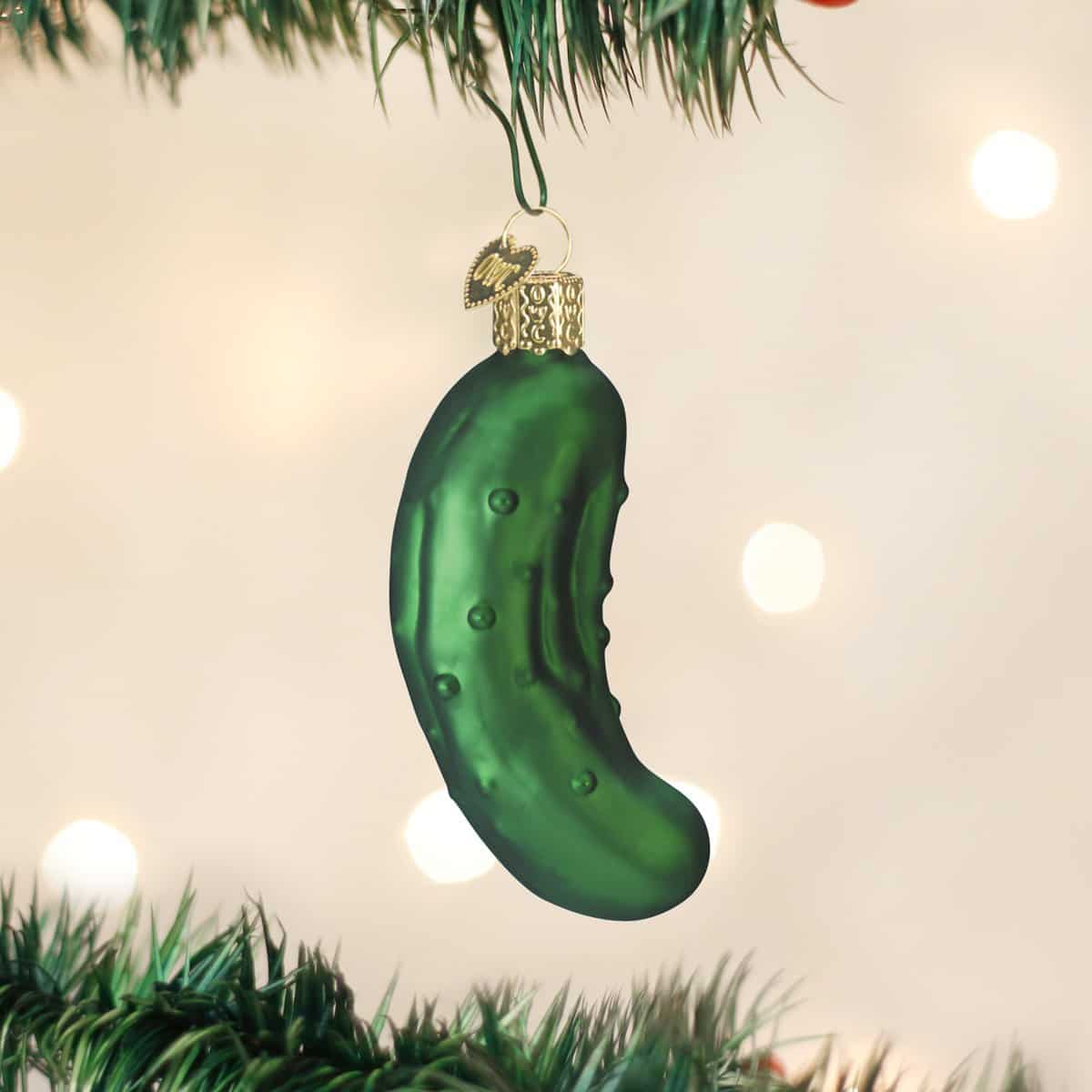
Just in time for the holidays, here are some lesser-known Christmas facts! It’s the most wonderful time of the year! Read on our gift to you: Christmas facts! Christmas facts, Christmas facts, Christmas facts all the way…
- The first Christmas happened in 336 AD in Rome.
- It came from a mix-up of Christian connotations, pagan traditions, and the confusion of pioneers making their own traditions.
- The word Christmas traces its old English roots back in 1038 from “Cristes mæsse”.
- The abbreviation “Xmas” is from the first letter of the Greek name of Jesus Christ which is the letter X.
- The original Christmas pudding is a soup composed of raisins and wine.
- Bishop of Rome Pope Julius the I proclaimed in 350 AD that December 25 is the official date of celebration for Christ’s birthday despite the absence of evidence.
- In 1915, Hallmark launched the first of its successful Christmas cards franchise.
- An average Christmas tree takes an average of 6-8 years to grow but could reach 15 years.
- The word “Noel” traces its origin to the Latin word Natalis, meaning “day of birth.”
- Having turkey, dressing, potatoes, pie, rolls, other sides and drinks for Christmas could feed a person more than 7,000 calories.
- The true love from “The Twelve Days of Christmas” sent a total of 354 gifts.
- Letters that the children in the United States write to Santa Claus go to Santa Clause, Indiana.
- Yearly Christmas season sees the production of more than 1.76 billion candy canes.
- People derived Santa’s elves from the “nature folk” of pagan religions.
- A century ago, people celebrated Christmas Eve by people telling scary ghost stories.
- England’s King William I had his crowning date on Christmas Day of 1066.
- Scotland prohibited the Christmas custom in 1640 until its legalization as a holiday in 1958.
- The largest floating Christmas tree hails from Rio de Janeiro, Brazil where it stands tall at 278 ft.
- America’s tallest living Christmas tree is in Coeur d’Alene, Idaho, standing 161-foot tall with a 10-foot tall star on top.
- The first President to install a Christmas tree in the White House was Franklin Pierce.
Christmas Facts Infographics

Christmas roots extend from many pagan festivals.
People celebrated Saturnalia during December 17-23. The Deus Sol Invictus (Birthday of the Unconquerable Sun) is every December 25. The Kalends is during January 1-5. All in all, it’s not too far from today’s lengthy festivities.
Christmas is not considered as a Biblical holy day.
The celebration was never mentioned in the Bible. All the associated customs and symbols with Christmas stemmed from pagan festivals and winter solstice rituals.
The Christmas Story is in the New Testament.
Matthew’s and Mark’s Gospel mention the story of the birth, life, death, and resurrection of Jesus, or also known as “The Christmas Story.”
St. Nicholas of Myra, a real person, inspired the character of Santa Claus.
Nicholas the Wonderworker was born in Patar in the 4th century and is the most popular non-Biblical saint. He is also the patron saint of New York City.

Santa Claus’ image used to be an early picture of St. Nicholas’ stern expression.
His first appearance was in a newspaper ad. Meanwhile, Thomas Nast birthed to Santa’s current image, publishing it on Harper’s Weekly in 1863.
Santa’s dress wasn’t always in red.
Various versions of Santa were present before the 1930s. While he sported several modifications in colors and size in the past, it was also believed that Coca-Cola created the existent version.
Santa Claus goes by a lot of names.
He is Pere Noel in France, Le Befana in Italy, Kriss Kringle in Germany, and Deushka Moroz in Russia.
Santa Claus would have to travel at 650 miles per second to complete gift deliveries on Christmas Eve.
As per the calculations of US scientists, going by this speed would enable him to finish all deliveries by visiting 822 homes per second.
A US department store designed Rudolph the Reindeer for promotional purposes.

The U.S. department store Montgomery Ward designed him to make children buy the Christmas coloring books. However, they didn’t make his not red to avoid making him look like a chronic alcoholic.
Santa’s reindeer are either female or castrated.
The names Blitzen, Comet, and Cupid might sound male-ish as the rest of herd, but it makes more sense for them to be female. Male reindeers shed their glorious antlers around the Christmas season, making them unfit for the image of the reindeer pulling Santa’s sleigh.
The United States declared Christmas an official holiday on June 26, 1870.
Of all the 50 states, Alabama came first in setting it as a legal holiday in 1836, while Oklahoma was last in 1907.
Resident Puritans in America outlawed all Christmas observances from 1659-1681.
They regarded it as a lewd Catholic holiday, hence, penalising each offense with five shillings. Some leaders even denounced Christmas supporters as enemies of the Christian religion.
Eating mince pies on Christmas Day is illegal in England.
Dating back in the 17th century, Oliver Cromwell forbade anything related to gluttony. The law that still exists until today includes mince pies and Christmas pudding.
Oslo, Norway donates London’s iconic Christmas tree in Trafalgar Square each year.
Londoners receive this as a yearly token of appreciation for their aid to Norwegians during World War II.
Playing card company Bicycle gave Christmas presents to WWII prisoners in Germany.
The deck of cards that they made and gave to the prisoners has hidden escape routes, and soaking them in water could uncover it.
Stanley Weintraub told a story about a WWI Christmas truce in 1914.
His book “Silent Night: The Story of the World War I Christmas Truce” narrated the exchange of gifts and football games between the British and Germans.
Germany reportedly initiated the Christmas tree tradition.
Moreover, tinsel which was earlier made of actual silver has German roots which taces back to 1610.
All 50 states of America grow Christmas trees.
Yep, and it even includes Hawaii and Alaska. The top producer states are California, Washington, North Carolina, Pennsylvania, Oregon, Wisconsin, and Michigan.
The Friday and Saturday before Christmas are the busiest shopping days of the year.
Black Friday might give the impression, but it’s contrary to what most people believe.
The largest old Christmas market in Europe is the Christkindlesmarkt in Nuremberg, Germany.
It started operating in 1570 where they sell Christmas decorations, ornaments, sweets, sausages and a spiced mulled wine named gluhwein.
Bolivians have a tradition of celebrating Misa del Gallo on Christmas Eve.
People attending the midnight mass or the “Mass of the Rooster” bring roosters as a symbolisation of their belief in the rooster being the first animal announcer of Jesus’ birth.
The Stir-up Sunday tradition makes families gather in the kitchen to mix and steam Christmas pudding.
Performed every last Sunday before Advent, family members take turns in stirring the pudding mix and making a special wish for the coming year.
The Three Wise Men have no precise origins.

The Gospel of Matthew only mentioned “wise men,” and has no numerical references.
Jews are major players in many popular Christmas songs.
Some of the songs they wrote or co-wrote are “Rudolph the Red-Nosed Reindeer,” “Winter Wonderland,” “White Christmas,” “I’ll Be Home for Christmas” and “Christmas Song (Chestnuts Roasting on an Open Fire).”
There are approximately 50 funny Christmas songs on the internet.
The list includes “Christmas Don’t Be Late” (the Chipmunk Song), “Grandma Got Run Over by a Reindeer.”
“The Twelve Days of Christmas” runs from December 25 to January 5.
These dates are the “Christmastide” or “Twelve Holy Days,” inspiring the all-time famous Christmas carol.
This carol is about a person recounting the gifts they received from their true love.
The “true love” role in “The Twelve Days of Christmas” is not a romantic couple.
It’s the Catholic Church code for God, while the recipient is a representation of subjects of the code. The “partridge in a pear tree” signifies Christ and the “two turtledoves” symbolise the Old and New Testaments.
“Jingle Bells” was originally “One Horse Open Sleigh.”
James Pierpont composed this song in Massachusetts as a Thanksgiving song. Astronauts Tom Stafford and Wally Schirra sang it into the first song sung in space on December 15, 1965.
“Last Christmas” royalties make about £300,000 per year.
Band Aid became the beneficiary of the first year’s profits, but starting 2012, George Michael had all his Last Christmas song royalties donated to charity.
Charles Dickens took 6 weeks to write A Christmas Carol.
According to IMDB, the story has had 202 film adaptations, with inclusions of non-traditional stories.
Watch “A Christmas Carol” this Christmas with your loved ones.
“We Wish You A Merry Christmas” was originally heard from servants demanding alcoholic drinks from their masters.
One line says, “We won’t go until we get some, so bring some out here.”
“White Christmas” by Bing Crosby holds the record of the best-selling Christmas song.
It sold above 50 million copies around the world.
The occurrence of a white Christmas has a relatively small probability.
In England and Wales, it only stands at 1 in 10, while in Scotland and Northern Ireland, it is at 1 in 6.
A white Christmas has official standards to meet.
Christmas could only be “white” in the observance of a single snowflake on the rooftop of the Met Office HQ in London 24 hours of the 25th of December.
Only 7 official white Christmases occurred in the United Kingdom during the 20th century.
This year, London only has a 6% chance of a White Christmas.
A poem introduced eight of Santa’s reindeer.
In the poem “Twas the Night Before Christmas” by Clement Moore. Their names are Comet, Cupid, Dancer, Dasher, Prancer, and Vixen. Duner and Blizem are German words for thunder and lightning, but they evolved later into Donner and Blitzen.
The real meaning of the word “Carol” is a dance or song of praise and joy.
People used to sing them in all four seasons. However, only one tradition survived wherein carols are only sung at Christmas.
The first Christmas tree lights were expensive due to being handmade.
These electric lights came into use first 3 years following Thomas Edison’s first demonstration of electric lights in 1879.
Apples were the earliest known decorations for Christmas trees.
Actors from medieval times used to have apples to decorated paradise trees during “Paradise Plays” at Christmas time. These plays portrayed the creation and fall of Adam and Eve.
Apples’ shape inspired the round glass Christmas ornaments.
Being the original Christmas ornaments, people place apples on the trees to signify the Garden of Eden.
The tradition of hanging stockings on Christmas originated from a Dutch custom.
Originally, the Dutches leave food-filled shoes for St. Nicholas’ donkey. It would be then filled with small gifts from St. Nicholas.
Legend states that Christmas stockings had a backstory featuring three poor sisters.
They believed that they had to resort to prostitution for being too poor to marry. Thankfully, Bishop Saint Nicholas of Smyrna sneaked down their chimney and had gold coins overflow their stockings.
The tallest Christmas tree stood high at 221 feet.
Claiming a Guinness record, people saw the Douglas fir at the Northgate Shopping Center in Seattle, Washington in 1950.
Gold, green and red are the traditional colours of Christmas.
Gold symbolizes wealth and royalty, green represents life and rebirth, while red embodies the blood of Christ.
Spider and spider webs are Poland’s common Christmas tree decors.
Their legend tells of a spider weaving a blanket for Baby Jesus. Moreover, spiders in Poland symbolizes Christmas goodness and prosperity.
Ivy and holly were common home decorations ever since the 9th century.
They serve as symbols of everlasting life. The holly signifies the crown of thorns on Christ’s head, while the berries portray his blood.
The sixth-century Christian Council of Braga banned home decorations due to their pagan associations.
Among other green boughs is the holly, with masculine representations, and the ivy, with feminine impressions.
Poinsettias are not poisonous.

The Aztecs farmed the Mexican-native flower, calling it Cuetlaxochitl, meaning “flower which wilts.” Poinsettia’s brilliant red colour stands for purity and has medicinal uses in reducing fever.
London sweet shop owner Tom Smith invented the Christmas cracker.
In 1847, seeing paper-wrapped French bonbons inspired him to sell similar sweets but with a “love motto” inside. Later, he added little trinkets as “Bangs of Expectation,” putting gifts like jewelry and miniature dolls.
Mistletoes means “little dung twig.”
It came from the Anglo-Saxon word mistletan, and its meaning came from the plant that spreads into bird droppings.
The record-holder for having the most Christmas number 1 singles is The Beatles.
They had 4 songs topping the charts in 1963, 1964, 1965 and 1967. On the other hand, The Spice Girls and Cliff Richard each have 3.
The value of the most expensively dressed Christmas tree is nearly £7,000,000.
On December 16-29 of 2010, the Emirates Palace put the tree up for display in Abu Dhabi, UAE.
Christmas tree decorations in the 1990s included edible food.
Homemade cards and snow-looking cotton embellished trees alongside candies and strings of popcorn. Candles were once used too before they caused disastrous fires.
Christmas tree decorations in the 1930s included a beautiful golden-haired angel at the top.
Around the tree, common ornaments like balls, bells, and tinsel are the main decorations.
Silver aluminum trees rose to fame in mid-1960.
A product of innovative modernist ideas, the popular artificial trees flew from America to countries all over the world. Decorations became unnecessary for it already has colored lights below.
After decades of decor evolution, the Victorian nostalgia made a comeback in the 1970s.
The refreshing new look either came from American companies specialising in antique replicas or original European makers recreating glass ornaments and real silver tinsels.
Themed trees gained popularity in the 1990s.
Delightful designs made a different turn for the usual Christmas ornaments. Examples are the completion of the “Starry Night tree” and the “Twilight tree,” among other pop culture trees.
"Home Alone" was the most popular Christmas film of all time.
As per the Yahoo poll, “The Muppet Christmas Carol” came in second, while “It’s a Wonderful Life” is at third place.
We’re sure you’ll love “Home Alone” too, watch it here!
Charlie Dicken’s journey of creating "A Christmas Carol" in 1843 became a movie.
“The Man Who Invented Christmas” narrated the story of how the English author started in a world where Christmas is at the bottom of the list of novel-worthy subjects.
“How The Grinch Stole Christmas” almost did not become a movie.

Chuck Jones pitched his storyboards to a lot of potential sponsors such as candy companies and breakfast foods. In the end, the Foundation for Commercial Banks became his unlikely sponsor.
Catch the movie “How The Grinch Stole Christmas” now!
Jim Carrey’s The Grinch makeup took 3 hours a day to complete.
His miseries in applying and wearing the makeup compelled Carrey to consult a Navy Seal who then shared torture-resistance techniques to him.
A mere rental car inspired the green colour of The Grinch.
The original book demonstrated that the Grinch is black and white in colour, sporting hints of red and pink. It was not after renting an ugly painted car that Chuck Jones decided to change the Grinch’s palette into an ugly green shade.
Tim Burton wrote the poem “The Nightmare Before Christmas” while working at Disney in 1982.
He felt purchasing the film rights to the movie was too weird, but ended up realizing that they owed him money years after Disney fired him. Then, Burton persuaded Disney to allow the movie.
The blending of the Halloween and Christmas articles in stores inspired the plot of “The Nightmare Before Christmas.”
Eager stores taking advantage of both shopping seasons in fall and winter made Tim Burton come up with the tale of the king of Halloween’s intrusion on the Christmas season.
A minute of the movie “The Nightmare Before Christmas” takes the producers a week to shoot.
The production of the whole 70 minutes of the movie then took 3 years to complete.
Get the classic “The Nightmare Before Christmas” 20th Anniversary Edition this Christmas!
Bob Clark based the movie “A Christmas Story” on the book “In God We Trust: All Others Pay Cash.”
Jean Shepherd wrote the 1966 book. It originated as a short-story series published in Playboy.
An entrepreneur purchased the Cleveland house seen in “A Christmas Story” in 2004 on eBay.
Brian Jones, an entrepreneur, paid $240,000 worth of interior transformation for the house to become an almost exact replica of the movie set.
The “A Christmas Story” house now makes $10 per entry.
Along with it stands a gift shop and museum. One could spend Christmas Eve and Day in the house by bidding on eBay, where the package inclusions are $800-worth of gifts complete with a bunny suit and a leg lamp. They donated all proceeds to charity.
Watch “A Christmas Story” again!
Before going big as a TV special, “Frosty The Snowman” was a hit song first.
Steve Nelson and Jack Rollins wrote the song in 1950 which became immortalized through Little Golden Books and Dell Comics.
Listen to “Frosty The Snowman” and more Christmas songs during your Christmas party!
“It’s A Wonderful Life” was not so wonderful for the FBI back in 1947.
The FBI claimed that the movie has a potential “Communist infiltration of the motion picture industry,” and even issued a memo regarding it.
Don’t miss this heart-warming movie “It’s A Wonderful Life“!
Krampus holds the record of being the creepiest Christmas custom.
Rose to fame through a horror-comedy film in 2015 was the half-demon, half-goat creature named Krampus. Alpine countries’ legends claim that he comes to punish the naughty ones.
Facebook posts data analyzation shows that the least favorite day for breakups is Christmas Day.
However, two weeks prior to the holiday are considered the two most popular times for such a heartbreaking event.
Olden English folk tales have it that the Devil fell when Jesus was born.
In some towns, people rang the church bells near midnight of Christmas Eve to proclaim the death of the Devil. The developed English custom became known as the ringing or tolling “the Devil’s knell.”
One common American tradition at Christmas is looking for a pickle-shaped ornament hidden on the Christmas tree.

The “Find the Pickle” tradition grants the first one to find it an extra present.
Get one and add it to your Christmas tree now!
The main celebration day in Peru is on the 24th of December.
On La Noche Buena or “The Good Night,” families attend mass, go home to feast, open presents, and holds a toast at midnight.
Iceland locals celebrate Jolabokaflod or “The Christmas Book Flood” on Christmas Eve.
As per tradition, people exchange books and go home to read them while eating chocolate for the rest of the night.
Lebanese children can approach any adult and say “Editi ‘aleik!”
It translates to “You have a gift for me!” which gives kids extra presents for their Christmas morning haul when the adult has something to spare.
The most common Christmas gift is a new outfit for wearing to church.
People collect natural items such as stones and leaves as birthday gifts for Jesus. Meanwhile, the most common Christmas feast center is a roasted goat.
Eating a big holiday meal at KFC is part of the Japanese Christmas tradition.
The custom is huge opposition to the healthy Japanese cuisine of mostly seafood and rice. Hence, it’s shocking for people to learn this.
Estonia natives hold the belief that their first visitor on Christmas determines the luck of the household.
A dark-haired “first-footer” is desirable. However, they consider red-headed or fair-headed ones unlucky.
We hope these Christmas facts made you remember why Christmas is the most wonderful time of the year. The festivities (and Christmas facts!) are just a bonus for the extra ounce of kindness that people are more willing to give on the holidays. Still, it would be better if we have such aura and attitude throughout the year.
Was this page helpful?
Our commitment to delivering trustworthy and engaging content is at the heart of what we do. Each fact on our site is contributed by real users like you, bringing a wealth of diverse insights and information. To ensure the highest standards of accuracy and reliability, our dedicated editors meticulously review each submission. This process guarantees that the facts we share are not only fascinating but also credible. Trust in our commitment to quality and authenticity as you explore and learn with us.
